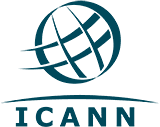SEO for Latino Businesses: How to Get Listed on Google
In today's digital world, having a strong online presence is essential for any business, and this is especially true for Latino entrepreneurs. One of the most powerful tools you can use to increase your business's visibility on the Internet is SEO (Search Engine Optimization). In this article, we'll explore what SEO is, why you need it, and how you can improve your business's SEO to get listed on Google. What is SEO and why do you need it? SEO, or search engine optimization, is a set of strategies and techniques used to improve a website's visibility in the search results of Google and other search engines. When users search for products or services related to your business, you want your website to appear among the first results. This is crucial, as most people don't go past the first page of results. Why is SEO important for Latino businesses? Increase visibility: Good SEO helps more people find your business when they search for related terms on Google. Generate web traffic: By improving your position in search results, you will attract more visitors to your website, which can translate into more customers. Credibility and trust: Appearing in the top positions on Google creates a perception of trust and credibility among users. Competitiveness: If your competitors are using SEO and you are not, you could lose valuable opportunities to them. Steps to improve your business' SEO Keyword research: Identify the words and phrases that your potential customers use to search for products or services like yours. Tools like Google Keyword Planner can help you find these keywords. Website optimization: Quality content: Create relevant and useful content that answers your users' questions. Make sure to include your keywords naturally. Tags and descriptions: Use optimized title tags and meta descriptions that include your keywords. This helps Google understand the content of your page. Google My Business: Register your business with Google My Business. Not only does this improve your local SEO, but it also allows users to easily find your contact information, hours, and location. Mobile Optimization: Make sure your website is optimized for mobile devices. More and more people are using their phones to search for information, and Google prioritizes websites that are mobile-friendly. Link Building: Generate quality links to your website from other relevant sites. This can improve your online authority and your position in search results. Analytics and Tweaks: Use tools like Google Analytics to monitor your website's performance. See which strategies are working and which ones need tweaking. SEO is a fundamental tool for any Latin business that wants to increase its visibility and attract more customers online. By following these steps, you will not only improve your position in Google search results, but you will also be one step closer to achieving success in the digital world. Download our free SEO guide! To go deeper into each of these steps and get more tips on how to optimize your website, download our free SEO guide. At CyberGlobalNet, we are here to help you grow in the digital world. Don't wait any longer and start your journey to online success today!
Read More






